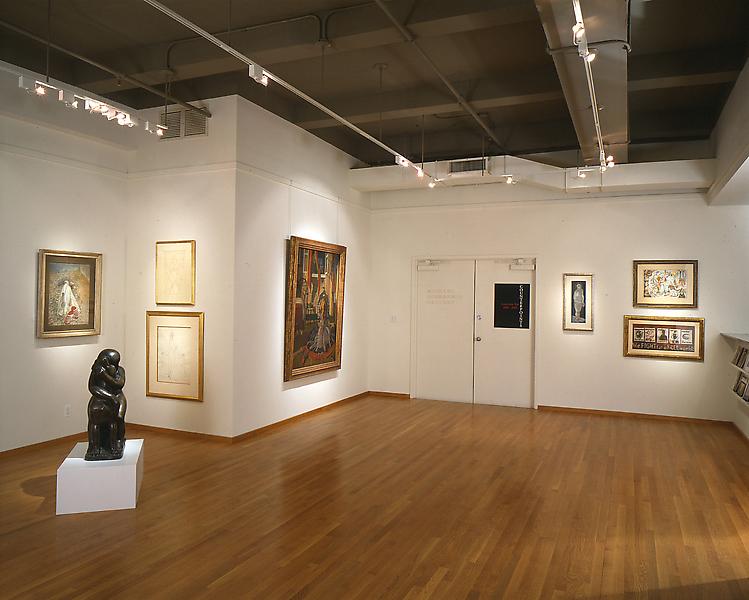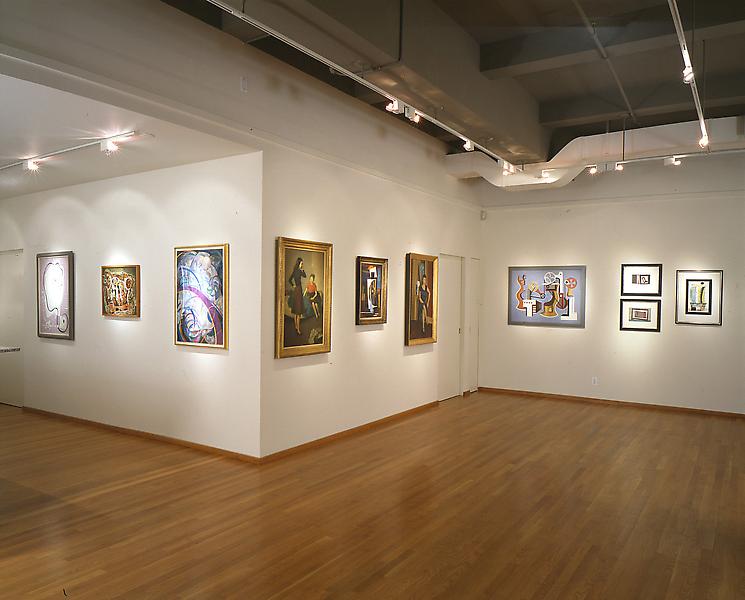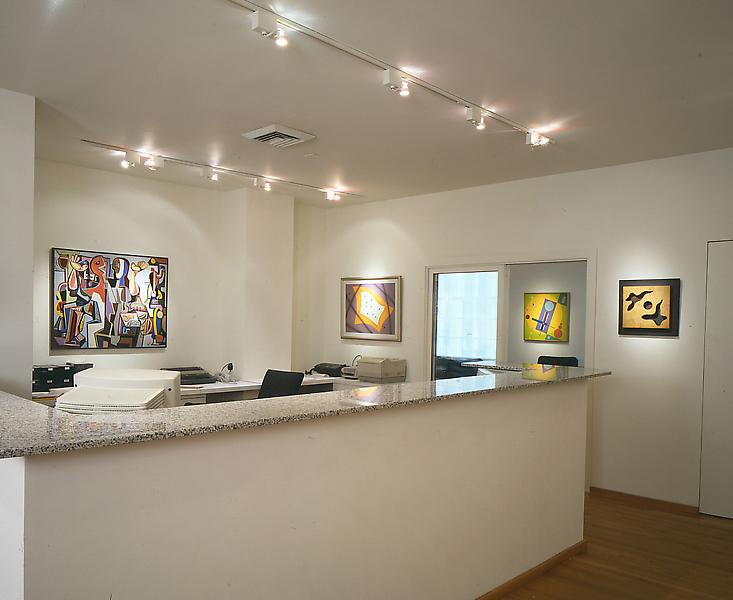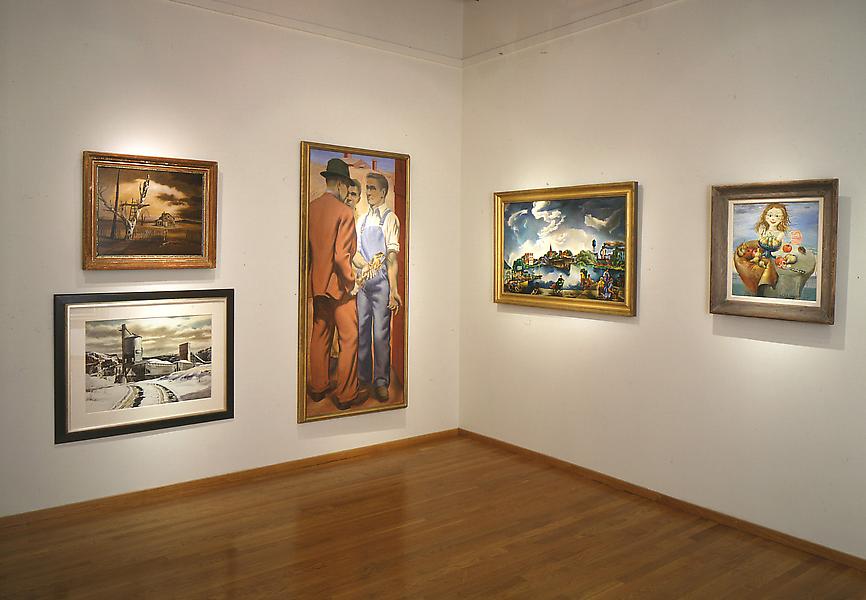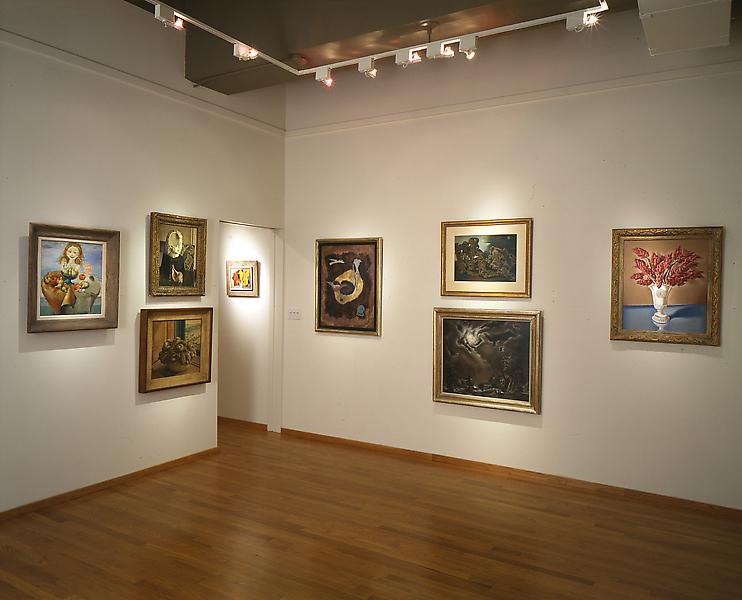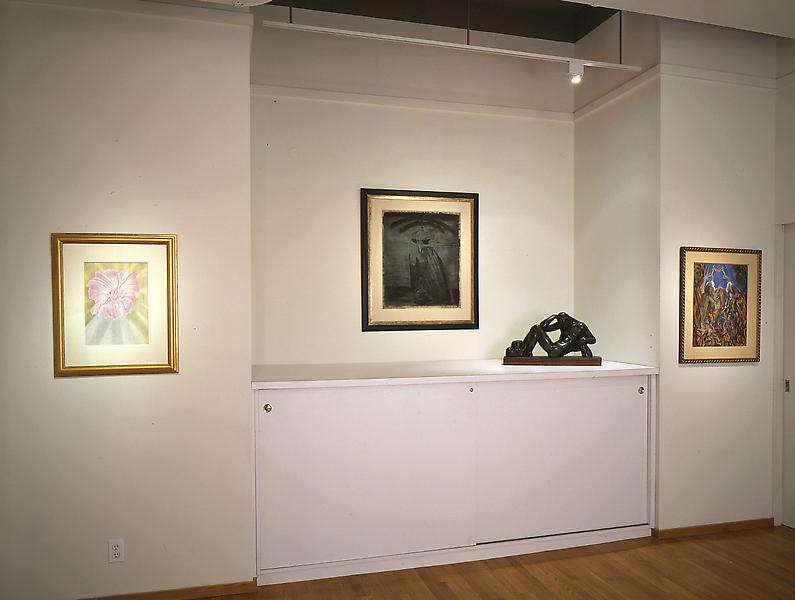Artists included in this exhibition: John Atherton, George Ault, Benjamin Benno, Thomas Hart Benton, Eugene Berman, Emil Bisttram, Ilya Bolotowsky, Byron Browne, Audrey Buller, Federico Castellon, Marvin Cone, Konrad Cramer, Werner Drewes, Philip Evergood, Ed Garman, Morris Graves, Balcomb Greene, Gertrude Greene, James Guy, Hananiah Harari, Raymond Jonson, Walt Kuhn, Gaston Lachaise, Blanche Lazzell, Saul Levine, Norman Lewis, Luigi Lucioni, Boris Margo, Reginald Marsh, Gordon Onslow-Ford, Alfonso Ossorio, Agnes Pelton, Irene Rice Pereira, Bernard Perlin, Paul Sample, Georges Schreiber, William Schwartz, Charles Seliger, Kurt Seligmann, John Sennhauser, Ben Shahn, Charles Shaw, Raphael Soyer, Theodoros Stamos, Joseph Stella, Pavel Tchelitchew, Mark Tobey, Joseph Vogel, and William Zorach
Counterpoints: American Art, 1930-1945
April 7 – June 4, 1994
Artists
-
- John Atherton (1900-1952)
- George C. Ault (1891-1948)
- Eugene Berman (1899-1972)
- Emil Bisttram (1895-1976)
- Ilya Bolotowsky (1907-1981)
- Werner Drewes (1899 — 1985)
- Philip Evergood (1901-1973)
- Ed Garman (1914-2004)
- Morris Graves (1910-2001)
- Raymond Jonson (1891-1982)
- Walt Kuhn (1880-1942)
- Gaston Lachaise (1882-1935)
- Luigi Lucioni (1900–1988)
- Reginald Marsh (1898-1954)
- Agnes Pelton (1881-1961)
- Irene Rice Pereira (1902-1971)
- Ben Shahn (1898-1969)
- Raphael Soyer (1899-1987)
- Theodoros Stamos (1922-1997)
- Joseph Stella (1877-1946)
- Pavel Tchelitchew (1898-1957)
- Mark Tobey (1890-1976)
- William Zorach (1887-1966)
Publications
Press Release
Counterpoints: American Art 1930-1945 is a rare opportunity to view the diverse trends concurrent in American art during the Great Depression and World War II eras. Ordinarily, exhibitions focusing on American painting and sculpture from this period isolate and examine only one particular style or one specific group of artists; Counterpoints: American Art 1930-1945 will explore and emphasize the pluralist nature of the multi-dimensional art world. On view will be major examples of abstraction from the New York based American Abstract Artists Group and the Transcendental Painting Group, centered in the South West, social realism, Surrealism, and various expressions of modernism.


